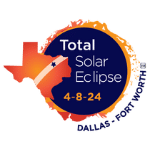What are the five phases of a total solar eclipse?
A total solar eclipse is composed of five distinct phases. These stages are as follows:
- Partial eclipse begins: The moon starts to move in front of the sun, creating the impression that a portion of the sun has been bitten off by the moon.
- Total eclipse begins: The moon continues its path, completely concealing the sun’s disk. Observers are now within the moon’s umbra, the darkest part of its shadow. Just before totality, the diamond ring effect and Baily’s beads can be seen.
- Totality and maximum eclipse: The moon entirely covers the sun’s disk, revealing only the sun’s corona. This phase is the most striking moment of a total solar eclipse. During this time, the sky goes dark, temperatures may drop, and birds and animals may become silent. The midpoint of totality is referred to as the maximum point of the eclipse.
- Total eclipse ends: The moon starts to move away from the sun, and the sun begins to reappear. After totality, those fortunate enough to be within the Moon’s umbral can observe the diamond ring effect and Baily’s beads.
- Partial eclipse ends: The eclipse concludes as the moon exits the sun’s disk.
What does totality mean when talking about the solar eclipse?
During the phase of a total solar eclipse known as totality, the moon completely covers the sun. Just prior to this phase, as the amount of sunlight decreases and the sky begins to darken, it may be possible to observe several stars and planets in the sky.
Why is the path of totality so narrow?
The path of totality during a solar eclipse is relatively narrow because it is determined by the shadow cast by the Moon as it passes in front of the sun. However, the moon’s shadow is not very wide and only falls on a small portion of the Earth’s surface during a solar eclipse.
Why are total solar eclipses rare?
Total solar eclipses are rare because the alignment of the sun, moon, and earth must be nearly perfect for the moon to cover the sun completely. The path of totality is also relatively narrow, so only a small area of the earth’s surface can experience a total eclipse.
What are some tips for observing a total solar eclipse?
To observe a total solar eclipse safely, always use proper eye protection and never look directly at the sun. You should also check the weather forecast and plan to be in a location with clear skies. Also, it’s a good idea to bring a chair or blanket to sit on and arrive early to secure a good viewing spot?
What is the difference between a total and partial solar eclipse?
A total solar eclipse occurs when the moon completely covers the sun. In contrast, a partial solar eclipse occurs when the moon only partially covers the Sun. During a partial eclipse, the sun appears crescent rather than completely covered by the moon.
Why is it important to use proper eye protection during a solar eclipse?
Looking directly at the sun, even during a partial eclipse, can cause permanent eye damage or blindness. Therefore, proper eye protection, such as special solar eclipse glasses or a solar filter on a telescope, is necessary to observe the eclipse safely.
Can animals be affected by a total solar eclipse?
Some animals may behave differently during a total solar eclipse, such as becoming quiet or disoriented. For example, birds have been known to stop singing and return to their nests, while nocturnal animals may become active during the temporary darkness.
Can you take photos or videos of a total solar eclipse?
Yes, you can take photos or videos of a total solar eclipse, but you must use proper equipment and techniques to avoid damaging your camera or smartphone. For example, you should use a solar filter on your camera lens or smartphone or special eclipse glasses to align your camera with the Sun to capture the eclipse.
What are some scientific discoveries that have been made during total solar eclipses?
Total solar eclipses provide unique opportunities for scientists to study the sun’s atmosphere, known as the corona. Researchers can observe the corona in detail during eclipses and investigate its composition and behavior. Eclipses have also been used to study the sun’s gravity’s effects on light and test Einstein’s theory of general relativity.
What is the path of totality?
The path of totality is the narrow path on the Earth’s surface where a total solar eclipse can be observed in its entirety. The path of totality is determined by the relative positions of the sun, moon, and earth. It can vary in width from a few kilometers to hundreds of kilometers. Outside of the path of totality, a partial solar eclipse can be observed.
How can I prepare for a total solar eclipse?
To prepare for a total solar eclipse, you should research the timing and location of the eclipse, check the weather forecast, and plan to be in a location with clear skies. You should also obtain proper eye protection, such as special solar eclipse glasses or a solar filter for a telescope, to safely observe the eclipse. It is also a good idea to arrive early to secure a good viewing spot and bring a chair or blanket.
